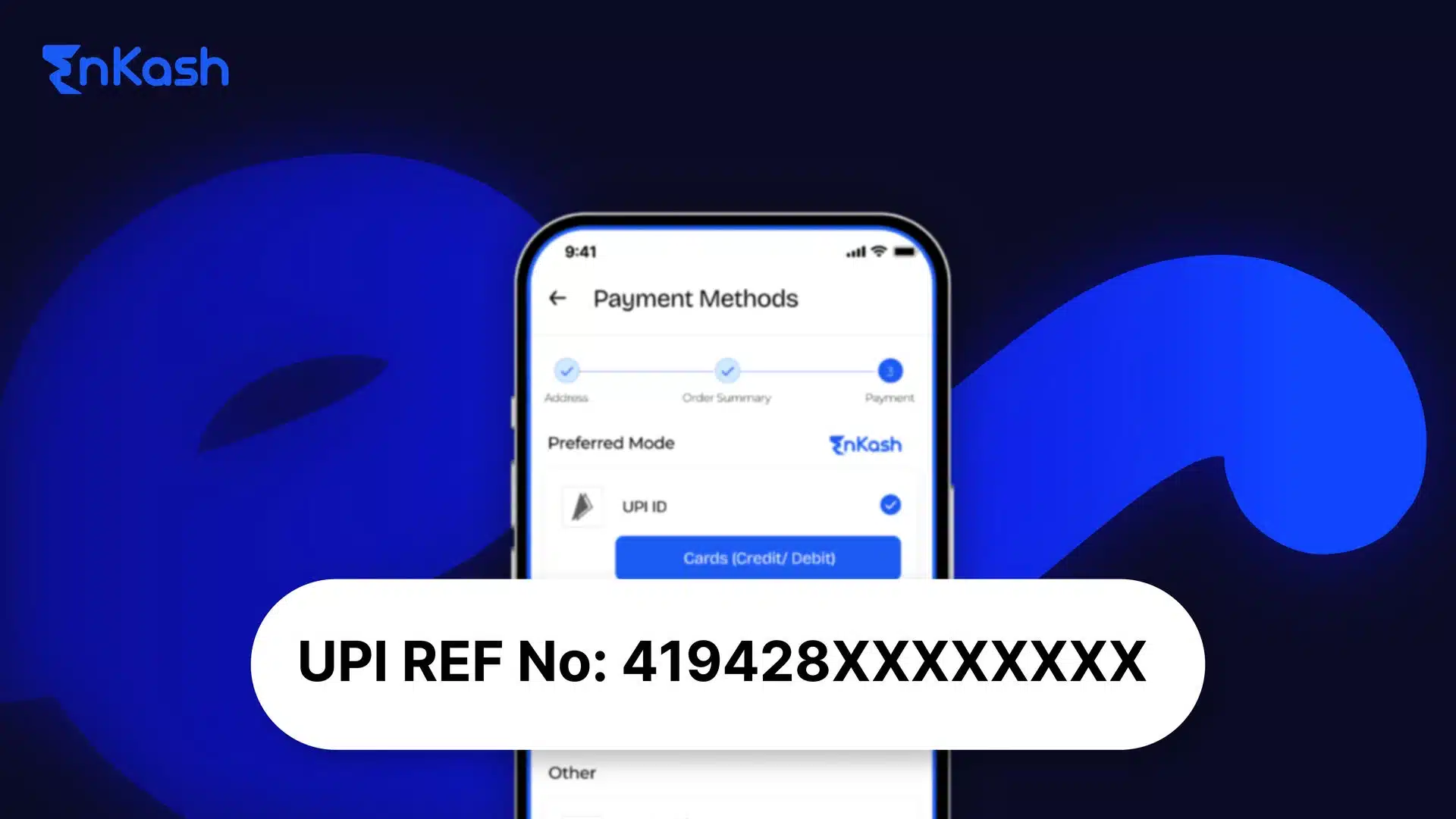Introduction
Have you ever been in a situation where bills, salaries, or loans were unpaid and pending? These are what are called outstanding expenses: the amounts that a person or a business owes but hasn’t yet paid. It is essential to monitor these for efficient financial management, improved cash flow, and accurate accounting. A business gets to know the whole story when it comes to financials by knowing about the unpaid salaries, utility bills, and pending loan repayments, among others. EnKash simplifies expense management by monitoring such expenses — ensuring timely payments, efficient spend management, and stronger financial control.
What is Outstanding?
Outstanding refers to an amount that is still due and unpaid. In the world of business, accounting, etc., it might be that the unpaid bills, pending salaries, loans, or any liability that the company has to pay. Keeping an eye on the outstanding balances is very important for a business to maintain its financial health, avoid paying late, and accurately record transactions.
Outstanding Balance Meaning
When a person or a business has an outstanding balance, it means that they owe a total amount of money represented by that balance at a certain point in time. Outstanding balance means he total amount a company owes at a given time — covering both short-term and long-term liabilities. For the business sector, watching outstanding balances means that cash flow is properly managed and payments are made timely.
What is the Current Outstanding?
Current outstanding signifies the obligations that the company needs to pay in the short run, that is, within a year or less. This could be unpaid bills for goods or services, salaries, or even utility bill payments. Failing to pay current outstanding bills may force a business to liquidate its assets, thus affecting operations or even the financial stability of the company.
What is the Outstanding Amount
The outstanding amount refers to the remaining balance that is yet to be paid at a given time. To illustrate, when a supplier’s bill of ₹50,000 is partially paid, ₹20,000, the outstanding amount left can be calculated as ₹30,000. The knowledge of the outstanding amount being exactly calculated is helpful in budgeting and maintaining financial control.
What are Outstanding Expenses
Outstanding expenses are those that the company has already incurred but not yet paid, thus the payment is still due. These expenses are one of the major points in accounting under the accrual system, where costs are attributed at the time of incurrence rather than at the time of payment. Salaries not paid, electricity and water bills not paid, rent not paid, unpaid professional fees, and supplier invoices not paid are some common examples of outstanding expenses.
Recording these expenses helps to ensure that the financial statements of the organization are truthful in terms of liabilities and provide a fair view of the period’s profits or losses. It is very important to keep a proper track of outstanding expenses because it helps firms manage cash flow efficiently, make timely payments, and maintain good relationships with suppliers, workers, and other parties who have a stake in the business.
Additionally, the tracking of outstanding expenses gives a glimpse into the company’s spending habits, thus helping the company to build a better budget, allocate resources wisely, and avoid financial bottlenecks. If the company is using modern financial management tools like EnKash, then automating the tracking of outstanding expenses will make making it easier to categorize liabilities, set reminders, monitor expenses, and plan finances.
This not only boosts the efficiency of operations but also guarantees that the company is up to date with its obligations while keeping its books accurate and transparent.
What is Total Outstanding
Total outstanding means the total of all amounts that a business has not paid yet and that it owes at a certain time, such as pending expenses, unpaid salaries, utility bills, outstanding loans, and other liabilities. It clearly reflects the company’s debts and is a good metric for financial planning and reporting. By knowing the total outstanding, companies can evaluate their current cash flow situation, decide if they can pay short-term and long-term liabilities, and hence make informed decisions about the company’s resources and investments. A clear view of total outstanding also enables organizations to keep away from defaults, late payment penalties, and unnecessary interest costs. Regular tracking of this figure lets businesses decide which obligations to settle first, manage liquidity properly, and keep the trust of creditors, employees, and suppliers. With financial tools like EnKash, companies can keep track of total outstanding in real-time, label liabilities, and see how much each department or project is costing them. This overall view of unpaid obligations not only helps in better budgeting and forecasting but also makes sure that companies are financially responsible and sustainable, hence, eventually, their financial health and operational efficiency will be improved.
Outstanding Loan Balance
An outstanding loan balance is the total debt that a borrower still owes the lender, comprising the original loan amount and any interest that has been added up to that point. The concept of outstanding loan balance applies to all kinds of loans, such as personal loans, corporate loans, bank loans, credit lines, and so forth. The businesses must do regular outstanding loan balance monitoring to ensure that they are financially stable and practicing timely repayments. Regular outstanding loan balance monitoring enables companies to do interest cost management more efficiently, prevent defaults, and plan cash flow in a way that repayment schedules are met without disrupting the day-to-day operations. For instance, if a company knows exactly how much the outstanding loan balance is, it will know whether to make partial prepayments, restructure its loans, or make adjustments to its operational budgets. Besides, having the outstanding loans ledger always up to date contributes to the credit rating being healthy, which is necessary for future borrowing and getting favorable financing terms. Financial management tools such as EnKash help businesses to conveniently and in real-time track their outstanding loan balances, categorize loans based on the type or department, and prepare reports that can aid in better decision-making. In the end, every business will be able to monitor its outstanding loan balances and thus will be able to discharge obligations, minimize interest costs, and build up a good financial reputation while encouraging sustainable growth.
Accounting Treatment of Outstanding Expenses
The treatment of outstanding expenses in the accounting books is a key factor, ie, accurate financial reporting, and it is also done under the accrual accounting system. Outstanding expenses are costs which the company has already incurred but has not yet paid, and these costs are entered into both the Profit & Loss (P&L) Account and the Balance Sheet. In the P&L, outstanding expenses are recognized as expenses of the current accounting period; thus, the net profit is reduced, and all costs incurred are shown properly. For instance, if salaries or utility bills are due but not paid at the end of the period, they will be included in the P&L, thus showing the actual expenses for that month. On the Balance Sheet, these expenses are classified as current liabilities under “Outstanding Expenses” until payment is made. This dual recording guarantees transparency and accuracy that stakeholders can see not only the costs incurred but also the obligations of the business that are yet to be settled. EnKash and similar tools can help businesses keep records of outstanding expenses by providing tracking and categorization, automating reminders, and integrating into financial statements. The proper accounting treatment will result in an organization being compliant, reporting the correct amount of profit, and having a clear view of liabilities while engaging in better financial planning.
Importance of Tracking Outstanding Amount
The tracking of outstanding amounts is one of the most important practices for any business, as it is the one that has a direct effect on the financial aspect of the company, its operations, and even on its growth in the long run. Keeping an eye on pending payments, unpaid expenses, as well as loans ensures that the company is not only aware of its liabilities but is also able to avoid complications that are not necessary. The reasons why tracking outstanding amounts is important are as follows:
Ensures Timely Payments and Avoids Late Fees
Among the main advantages of monitoring outstanding amounts, the most important is that it helps businesses pay their debts on time. Liabilities such as paying suppliers, rent, and staff may incur late fees or even harsh vendor and employee relations if not handled properly. Companies can then easily manage their liabilities and keep risks of losing money or their good name at bay.
Helps Maintain Accurate Financial Records
The amounts due at any point in time are one of the major components of a company’s financial data. Overall tracking ensures that the double entry of accounts at the P&L and Balance Sheet is carried out timely and correctly, hence the actual financial scenario is portrayed. Proper record keeping is indispensable for audits, compliance, and clear-cut reporting; thus, businesses are enabled to arrive at financial decisions that are based on correct information.
Provides Clarity on Cash Flow and Liquidity
The monitoring of the outstanding balances helps businesses maintain clear visibility into cash flow. The companies can forecast their liquidity more efficiently, as they know which payments are still pending, and therefore they can make sure that the funds are there to cover their obligations and that the operations will not be interrupted. Such clarity of the cash flow situation will not only eliminate shortages but will also ensure smooth and efficient financial management.
Aids in Budgeting and Forecasting Future Expenses
The monitoring of unliquidated liabilities aids in the making of realistic budgets and the forecasting of future expenses. Through tracking of unpaid liabilities, companies can look at trends, understand which payments are coming next, and plan their resources in such a way that will lead to lower chances of overspending or sudden financial difficulties caused by a lack of funds.
Supports Better Decision-Making
Proper understanding of the outstanding balances is a major contributor to both operational and strategic decisions. Negotiating terms with suppliers, considering new markets, and planning investments are all areas that need accurate and timely data to go ahead with management decisions that will be less reactive and more proactive. Software such as EnKash enhances this by means of monitoring automation that captures fewer errors and renders actionable insights for more intelligent financial management.
Example of Outstanding
An outstanding expense is one that has been incurred but not yet paid. For example, a company gets its electricity bill amounting to ₹10,000 for October, but it pays in November. So, the company will consider the ₹10,000 as a bill for October because the company’s responsibility to pay has arisen in that month, even though the outflow of cash will be in the next month. In the same way, think of ₹50,000 worth of salaries for September that will not be paid until October. During that time, the company owes money to its workers, and therefore, the salaries are termed as outstanding until the payment is made. The outstanding amounts are not only limited to bill payment or salary payment; they may also include rent, loan repayments, service fees, or any other incurred costs that remain unpaid at the end of an accounting period. Accurately recording such expenses guarantees not only an exact portrayal of the liabilities on the Balance Sheet but also a realistic view of profits in the Profit & Loss Account, thus adhering to the accrual accounting principle. EnKash and similar tools make it easier for businesses to track outstanding expenses by organizing unpaid amounts, sending out notices, and incorporating them into financial reports, which in turn helps businesses be more transparent, control their cash flow, and plan for settlements on time. The businesses that properly keep track of outstanding amounts indeed will be the ones to avoid incurring late fees, enjoying trust relationships, and gaining stronger control over their finances.
Conclusion
Recognizing and recording outstanding expenses and liabilities is crucial for proper accounting, cash flow management in an efficient way, and financial planning in a strategic manner. Monitoring unpaid bills, salaries, loans, and other liabilities keeps companies financially disciplined, helps them to stay away from late fees, and allows them to make educated decisions. Recognizing these amounts guarantees that the Profit & Loss Account and Balance Sheet reveal the actual financial state of the company. By utilizing a solution like EnKash, corporations can automate the tracking of outstanding expenses, resulting in enhanced transparency, acquiring actionable insights, and hence making it easier to schedule payments, allocate resources in the best way, and overall improve the company’s financial health and operational efficiency.
FAQs
1. What are outstanding expenses?
Outstanding expenses are costs incurred but not yet paid, like unpaid salaries, bills, or professional fees.
2. What is the outstanding salary?
Outstanding salary is the portion of the employee’s wage that has been earned but not yet paid to them by the employer.
3. Can outstanding expenses impact business profitability?
Yes. Unpaid expenses can reduce profitability and disrupt cash flow and financial planning. Proper monitoring of such expenses is beneficial as it will give a more truthful picture of the profits and also help in avoiding surprises at the closing of the accounting period.
4. How is an outstanding expense treated in accounting?
It is charged as an expense in the profit and loss account and is also shown as a liability in the balance sheet till the time it is unpaid.
5. Can outstanding amounts be settled in installments?
The company can agree on payment in installments for specific liabilities, but still, these should be accounted for as unpaid liabilities until the whole amount is paid to maintain accurate financial records.








